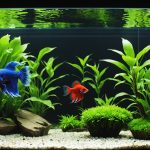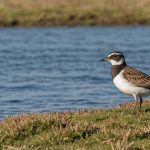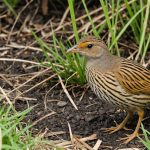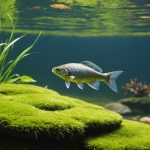Introduction to Top Fish Varieties for UK Ponds
Choosing the right fish for your UK pond can significantly enhance your garden’s aesthetics and ecosystem function. Fish are integral to any pond setting as they help maintain a balanced aquatic environment. Not only do they add visual appeal with their vibrant colours and movements, but they also play a critical role in controlling algae and mosquito populations. This makes them essential for the ecological health of your water garden.
The key to successful pond management is selecting fish varieties suited to UK ponds. Species like koi, goldfish, and tench are not only popular choices but also thrive in the UK’s climate. By introducing these top fish varieties, you will enjoy a pond that is both visually captivating and ecologically robust. Fish with good cold tolerance and low oxygen requirements are ideal candidates.
In parallel : Exploring the effects of climate change on coastal bird populations in the uk: a deep dive into the consequences
Within this guide, you will find detailed insights on the best fish varieties for UK ponds, considering factors such as size, temperament, and environmental needs. With informed choices, your garden pond will not only support a thriving fish population but also offer an educational and leisure space for all. Prepare to dive into a world where beauty meets biodiversity, with each fish type contributing uniquely to your pond’s ecosystem.
Popular Fish Varieties for UK Ponds
Choosing the ideal pond fish selections involves considering the climate, pond size, and ecology. Let’s explore some popular options.
Topic to read : Reviving the corncrake: a deep dive into uk zoo breeding programs for endangered species conservation
Goldfish
Goldfish are a beloved choice for UK ponds. Known for their vibrant colours and ease of care, they thrive in smaller ponds and winter well. Goldfish are adaptable and can live in varied conditions, making them an ideal starter fish. However, it’s essential to maintain proper water quality to prevent diseases.
Koi Carp
Koi Carp can transform any pond into a serene oasis. Their striking patterns and hues make them highly sought-after. They require larger ponds to accommodate their size, which can reach up to three feet. Additionally, a powerful filtration system is necessary to handle the waste Koi generate. Their presence can promote a balanced ecosystem by controlling algae growth.
Common Carp
The Common Carp is robust, tolerating diverse water conditions. For ponds, they offer ecological benefits such as aerating the water by sifting through sediment. However, they need ample room due to their potential size. It’s also important to balance their numbers to avoid competition for resources with other pond inhabitants. Consider the habitat requirements when including them in your pond.
Compatibility of Fish Species
When considering fish compatibility in ponds, several factors come into play to ensure a harmonious environment. The size of the pond, each species’ temperament, and bio-load capacity are crucial. More space generally provides a better habitat, reducing territorial disputes. It’s important to match the temperament of fish—some species are peaceful, while others are aggressive and may not fit well together.
Pond fish cohabitation can be achieved with specific groupings. A classic example is koi and goldfish; these species are known to coexist peacefully due to their similar dietary needs and calm natures. Other compatible groupings include shubunkins and comets, which share similar temperament and environmental needs.
Tips for introducing new fish are essential to maintaining a balanced ecosystem. Quarantine new fish to check for diseases before introducing them to the pond. Gradually acclimate the fish to temperature changes by floating the bag in the pond. Monitor the initial interactions between new and existing fish to ensure peaceful cohabitation.
Keeping tabs on water quality and providing ample shelter within the pond promotes a natural balance, ultimately enhancing the dynamics of fish compatibility in ponds and ensuring a thriving aquatic environment.
Benefits of Adding Fish to Ponds
Adding fish to ponds brings a myriad of ecological advantages, promoting a vibrant ecosystem. Firstly, fish play a significant role in enhancing biodiversity within garden ponds. By introducing different fish species, you create a dynamic environment that supports various aquatic plants and microorganisms. This diversity is crucial for a healthy, resilient ecosystem.
Fish contribute to natural pest control by incorporating them into your pond. Their feeding habits help manage insect populations, such as mosquitoes and other pests. By consuming larvae and other small insects, fish help maintain a balanced environment without the need for chemical interventions. This natural approach not only sustains pond health but also supports the surrounding garden ecosystem.
Moreover, fish are important in nutrient cycling within ponds. As fish feed and produce waste, they contribute to the nutrient dynamics of the water. This process supports the growth of beneficial algae and plants, which in turn provide oxygen and habitat for other pond life. The nutrient cycling orchestrated by fish is essential for maintaining clear and healthy water conditions.
By focusing on these benefits, adding fish to a pond enriches its ecological advantages. Embracing this approach nurtures a sustainable, thriving pond environment.
Care and Maintenance of Pond Fish
Caring for pond fish involves more than feeding and observing them. Proper maintenance ensures healthy pond ecosystems, vital for sustaining aquatic life.
Water Quality Management
Maintaining good water quality is crucial for pond fish care. Begin by controlling ammonia and nitrate levels. Regular water testing and pH adjustments support fish health. Use a dependable test kit to monitor these parameters and take corrective action when needed. Adding beneficial bacteria can further enhance water quality by breaking down organic waste and reducing harmful levels of ammonia and nitrate.
Feeding Practices
Appropriate feeding practices are essential. Overfeeding leads to excess waste and water quality issues. Choose high-quality fish food to meet the nutritional needs of your pond inhabitants. Offer small, easily consumable amounts based on your fish population and size. In colder months, reduce feed frequency since fish metabolism slows down.
Seasonal Care Tips
Fish care varies with the seasons. In spring, gradually resume feeding as temperatures rise. Summer demands shade over the pond to prevent overheating. In autumn, start decreasing the food supply, and in winter, focus on preventing ice cover, allowing gases to escape. Seasonal adjustments are key to maintaining a balanced, healthy pond environment for your fish.
Potential Challenges with Pond Fish
Managing a pond ecosystem presents unique challenges, especially when it comes to pond fish challenges. Among the primary concerns are the common diseases and health issues that can afflict these aquatic creatures. Diseases like fin rot and ich are frequent setbacks, requiring pond keepers to stay vigilant. Treatments typically involve water treatments and sanitation to maintain fish health.
Another significant issue is dealing with overpopulation. Too many fish can lead to a depletion of resources and increased waste, stressing the ecosystem. Incorporating natural predator species, like herons or raccoons, can help manage overpopulation naturally. However, these predators themselves pose threats and require strategies to protect vulnerable or valuable fish species.
A further challenge is preventing algae growth. Algae, if left unchecked, can choke a pond’s life, depleting oxygen and blocking sunlight. Employing strategies such as regular water testing and plant introduction can help maintain balance. Specific aquatic plants absorb excess nutrients, preventing excessive algae growth.
Successfully managing pond ecosystems involves balancing health, population, and ecological components. While challenging, understanding potential issues and employing preventive measures ensures a healthier and more harmonious pond environment.











